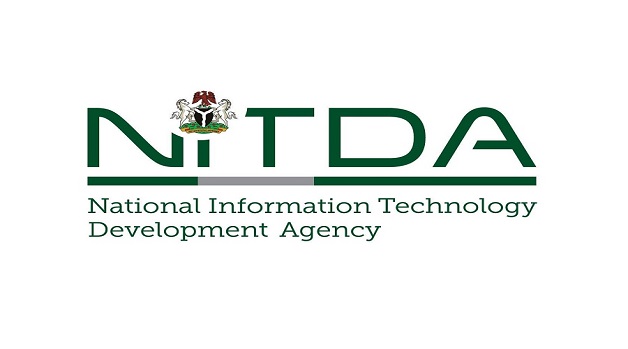E-Business
Dell Introduces S6000 Data Centre Switching Platform
Dell Networking has expanded its S-series portfolio with the new S6000, the industry’s highest-density 1RU 10/40GbE switching platform for highly-virtualized data centers.
A fixed form factor design, the S6000 doubles the density and through put while consuming up to 50 percent less power than previous generation top-of-rack switches.
Built-in advanced virtualization and automation features help customers scale larger virtual deployments in a smaller physical footprint, and helps solve the challenge of bridging virtualized and non-virtualized aspects of the infrastructure.
According to Tom Burns, vice president and general manager, Dell Networking, “Virtual environments are expanding while physical footprints remain constant, resulting in massive density increases in servers and storage. Networks need to keep up. That’s what inspired the S6000,”
“The S6000 platform can help customers unify virtualized and non-virtualized IT elements, providing a gateway to a software-defined enterprise.” he added
Bob Laliberte, senior analyst, Enterprise Strategy Group,emphases that: “To help accelerate the adoption of Network Virtualization technologies, it will be imperative for organizations to have visibility across both the virtualized and physical network environment. The Dell S6000 is tightly integrated with VMware solutions to enable a holistic view of the network environment that will enable faster troubleshooting and more effective provisioning.”
S6000 supports advanced network virtualization and software-defined networking features including hardware-accelerated layer 2 gateway functionality for use with VMware NSX™, bridging traffic between virtualized and non-virtualized environments.
Dell is also previewing enhanced functionality with Active Fabric Manager (AFM) 2.0 specifically for VMware environments.
Active Fabric Manager provides simplified configuration, management and monitoring of Dell Active Fabric leaf and spine elements.
With AFM 2.0, Dell will be introducing command line interface functionality for VMware vSphere® Distributed Switch allowing customers to now configure both physical and virtual fabric switches with common design templates and industry-standard command line syntax.
Like the rest of the Dell Networking S-series portfolio, S6000 supports OpenFlow for controller-based applications; Bare Metal Provisioning (BMP) for rapid and automated deployments; Virtual Server Networking (VSN) for automated VM mobility and VLAN configuration; and Perl and Python scripting for maximum programmability and interworkings with development operations (DevOps). All of this makes the S6000 highly adaptable and flexible and built to simplify operations.
High-density: Deployed as 32 40GbE ports or 96 10GbE ports plus 8 40GbE ports in 1RU, the S6000 can support new, more flexible network architectures for high-density compute racks in top-of-rack position, or provide network connectivity for multiple racks in efficient end-of-row or middle-of-row configurations.
High-throughput: Provides up to 2.56Tbps performance twice that of similar competitive products in a standard 1RU form factor allowing customers to aggressively invest in 10GbE for in-rack server and storage connectivity.
Energy efficient: S6000 is Fresh Air capable and validated as part of Dell’s Fresh Air cooling solution for servers, storage and networking.
By leveraging the thermal and reliability advantages engineered into this portfolio of equipment, customers are able to run data centres even warmer, helping reduce additional maintenance and infrastructure costs, while enabling lower overall energy consumption.
Today’s data centres are going through substantive and rapid change. Growth in server virtualization and cloud deployments are driving denser deployments with significantly increased bandwidth requirements.
The predominance of East-West traffic inside data centres generated by newer workloads such as Hadoop, virtual desktop infrastructure, web and cloud applications is causing many customers to consider new network architectures to maximise efficiency and economics.
Dell expects worldwide availability of the S6000 switching platform in its fiscal third quarter 2013.
E-Business
Microsoft Servers Hacked by Chinese Groups

Chinese “threat actors” have hacked Microsoft’s SharePoint document software servers and targeted the data of the businesses using it, the firm has said.

China state-backed Linen Typhoon and Violet Typhoon as well as China-based Storm-2603 were said to have “exploited vulnerabilities” in on-premises SharePoint servers, the kind used by firms, but not in its cloud-based service.
The US tech giant has released security updates in response and has advised all on-premises SharePoint server customers to install them.
“Investigations into other actors also using these exploits are still ongoing,” Microsoft said in a statement.
The firm said it had “high confidence” the hackers would continue to target systems which have not installed its security updates.
It added that it would update its website blog with more information as its investigation continues.
Microsoft said it had observed attacks in which hackers had sent a request to a SharePoint server “enabling the theft of the key material by threat actors”.
Charles Carmakal, chief technology officer at Mandiant Consulting firm, a division of Google Cloud, told reporter, it was “aware of several victims in several different sectors across a number of global geographies”.
Carmakal said it appeared that governments and businesses that use SharePoint on their sites were the primary target.
A number of adversaries who stole material encoded by cryptography were then able to regain ongoing access to the victims’ SharePoint data, he said.
“This was exploited in a very broad way, very opportunistically before a patch was made available. That’s why this is significant,” Carmakal said.
Carmakal said the “China-nexus actor” was deploying techniques similar to previous campaigns associated with Beijing.
Microsoft said Linen Typhoon had “focused on stealing intellectual property, primarily targeting organizations related to government, defence, strategic planning, and human rights” for 13 years.
It added that Violet Typhoon had been “dedicated to espionage”, primarily targeting former government and military staff, non-governmental organizations, think tanks, higher education, the media, the financial sector and the health sector in the US, Europe, and East Asia.
Meanwhile, Storm-2603 was “assessed with medium confidence to be a China-based threat actor”.
E-Business
NIMC Warns Nigerians of Fake NIN Website

National Identity Management Commission (NIMC) has issued a public warning that it is not associated with NINcard.com.

According to the commission, the website has been circulating online to offer services for Nigerians seeking National Identification Number (NIN) services.
NIMC, in a post on its official X account on Wednesday, said, “NINcard.com is not in anyway affiliated to NIMC. Stay vigilant!”
The warning was accompanied by screenshots of fake payment receipts and OTP request pages from the website, both of which were boldly stamped “FAKE” by NIMC to alert the public.
E-Business
NITDA, API Partner Against Harmful Online Content

National Information Technology Development Agency (NITDA), in partnership with the Advocacy for Policy and Innovation (API), has convened a one-day workshop in Abuja to advance dialogue on the draft Online Harm Protection (OHP) Bill to confront harmful online content.

The bill, a rights-based, locally rooted, and multi-stakeholder initiative, is aimed at addressing the challenges of the digital age.
The event, which held yesterday, brought together government officials, civil society, academics, digital platforms, and legal experts to shape a policy framework designed to combat online ills such as cyberbullying, disinformation, hate speech, digital exploitation, and gender-based violence, while safeguarding democratic freedoms and digital inclusion.
In his keynote remarks, Kashifu Inuwa, director general, NITDA urged a paradigm shift in the way society engages with digital technologies.
“For almost two decades, we have viewed digital technology through a consumer lens. But these technologies are not just products and services. They are transforming how we live, work, and interact. They shape our politics, our society, and our democracy,” he said.
Warning against unaccountable digital power in the hands of private corporations, the DG likened the digital journey to the tale of Alice in Wonderland, where initial fascination with innovation has given way to deeper concerns about privacy, autonomy, and manipulation by big tech platforms.
“We thought we were using Google, but now we realise Google is using us. Social media, once a tool of expression, has become a tool of surveillance and influence,” Inuwa noted.
He, therefore, emphasised the urgency of developing a democratic and accountable framework. He explained that following the 2021 Twitter ban, NITDA facilitated dialogue between the government and platform operators, leading to a Code of Practice that stressed Nigeria’s sovereignty and legal standards.
According to him, the same process birthed the multi-stakeholder steering committee and the OHP White Paper in December 2024, laying the foundation for the current legislative push.
Earlier in her opening remarks, Victoria Manya, co-founder, API, observed the moral and civic necessity of the bill.
Her words: “The internet did not break society, it merely revealed its unfiltered version. Every day, Nigerians are exposed to harassment, disinformation, exploitation, and even algorithmic violence. The OHP Bill is not a war on the Internet. It is a peace offering to its users, a social contract for a digital future that is safe, inclusive, and democratic.
“We cannot answer the question of algorithmic power with unchecked state control. We must answer it with shared, rights-based governance. This bill must not be written for the people, but with them.”

 E-Financial2 days ago
E-Financial2 days agoKuda Unveils New Wallet for Multiple Currencies

 Telecom2 days ago
Telecom2 days agoTelcos Resume SIM Card Sales after 2-Week Halt

 Telecom2 days ago
Telecom2 days agoNigeria, Others Achieve 84% Adult Mobile Phones Penetration

 E-Business2 days ago
E-Business2 days agoHow AI Alert by Airtel is Transforming Mobile Security in Africa

 E-Business2 days ago
E-Business2 days agoNITDA, API Partner Against Harmful Online Content

 Telecom1 day ago
Telecom1 day agoTelcos: How and Why Network Services have Been Poor

 Telecom1 day ago
Telecom1 day agoGlo Launches Nigeria’s First-of-its-kind Device Protection Plan

 News2 days ago
News2 days agoHorn of Africa Leaders Seek Enhanced Digital Integration for Increased Regional Growth



























